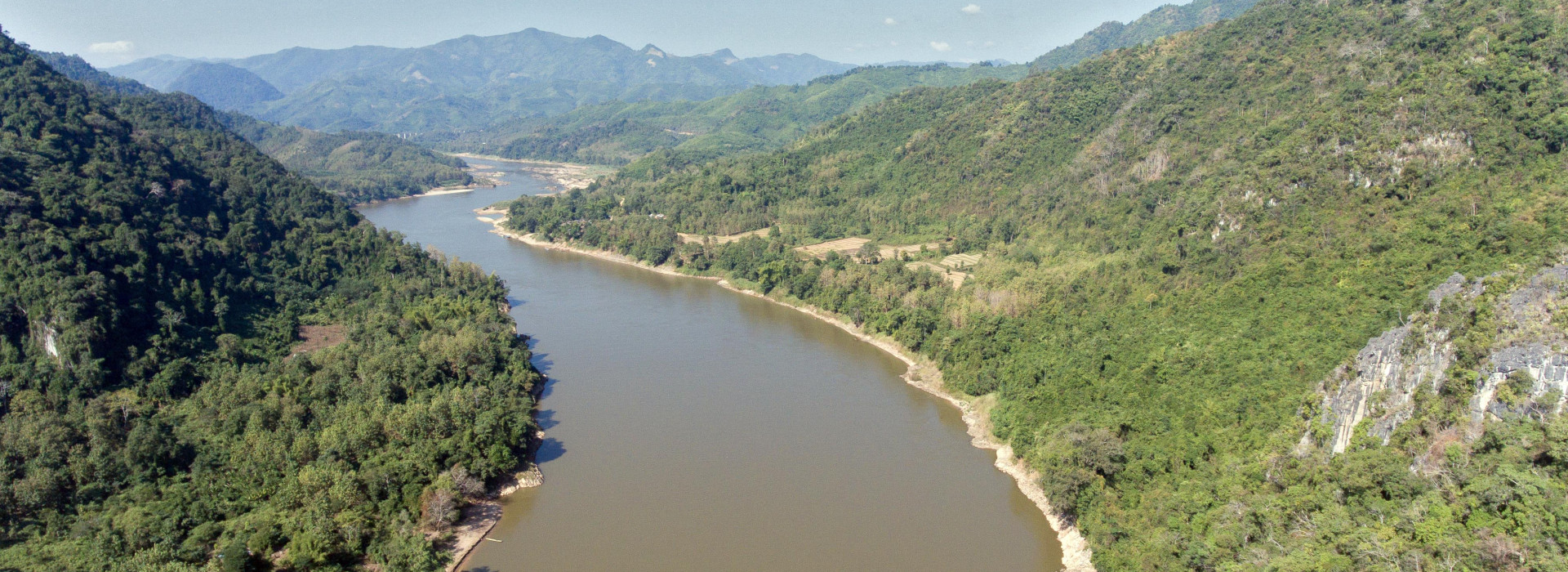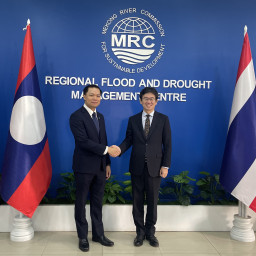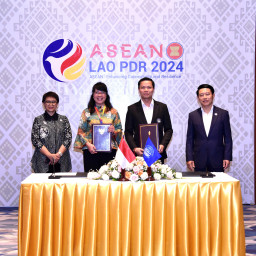Mekong water levels to drop due to dam equipment testing in China
Vientiane, Lao PDR, 31 December 2019 — The water outflows at the Jinghong hydropower station in China will be reduced by more than 50% due to dam equipment testing from 1 – 4 January 2020, affecting river water levels in Thailand, Lao PDR and Cambodia.
According to a notification from China’s Ministry of Water Resources that the Mekong River Commission Secretariat received yesterday, the tests of the “equipment of the power station” will result in water outflow decrease from the dam from 1,200 – 1,400 cubic meters per second (m³/s) to between 800 – 1,000m³/s from January 1-3.
The amount of water flow will be further reduced to its lowest point of 504-800m³/s on January 4 before it is restored to its original volumes, the notification said.
Based on the MRC’s observed and forecasting water levels, the tests will see the water level in Chiang Saen – the first monitoring station on the Mekong River in Thailand located approximately 300km away from Jinghong – drop between 0.50 and 1 meter during January 1 – 6.
The stretches from Vientiane to Paksane of Lao PDR, including Nongkhai of Thailand, will experience a 0.02 – 0.70-meter decrease in their water levels during January 6 – 10.
In the Mekong mainstream from Thailand’s Nakhon Phanom, Mukdahan and Khong Chiam to Lao PDR’s Thakhek, Savannakhet and Pakse, their water levels will fall between 0.02 and 0.50 meters during January 12 – 14.
In Cambodia, the water levels along the Mekong River in Stung Treng, Kratie, Kompong Cham, Phnom Penh, Koh Khel and Neak Luong will drop from 0.02 – 0.25 meters during January 15 – 18.
“Navigation activities on the Mekong River, especially around the areas close to Jinghong, may be affected during this period. Some local livelihood activities such as riverweed harvesting may also be disrupted,” said Dr. Sothea Khem, the MRC Secretariat’s River Forecasting Specialist, adding that the tests come at a time when the Mekong countries are experiencing serve drought.
According to the latest MRC’s flow monitoring, the 2019 drought has brought the Mekong water levels to their lowest points in living memory or at least over the last 60 years, with most parts of the basin having experienced an exceptionally regional low flow since June.
The MRC and China have recently agreed to conduct a joint research on the 2019 drought and low flow situation in the Mekong River basin that covers both the lower and the upper part in China where Mekong is known as Lancang. The study, scheduled to begin next month and finish by September 2020, aims to identify the causes and impacts of drought and low flow condition in 2019.
Note to editors:
The MRC is an intergovernmental organization for regional dialogue and cooperation in the lower Mekong river basin, established in 1995 based on the Mekong Agreement between Cambodia, Lao PDR, Thailand, and Viet Nam. The organization serves as a regional platform for water diplomacy as well as a knowledge hub of water resources management for the sustainable development of the region.
- END -





